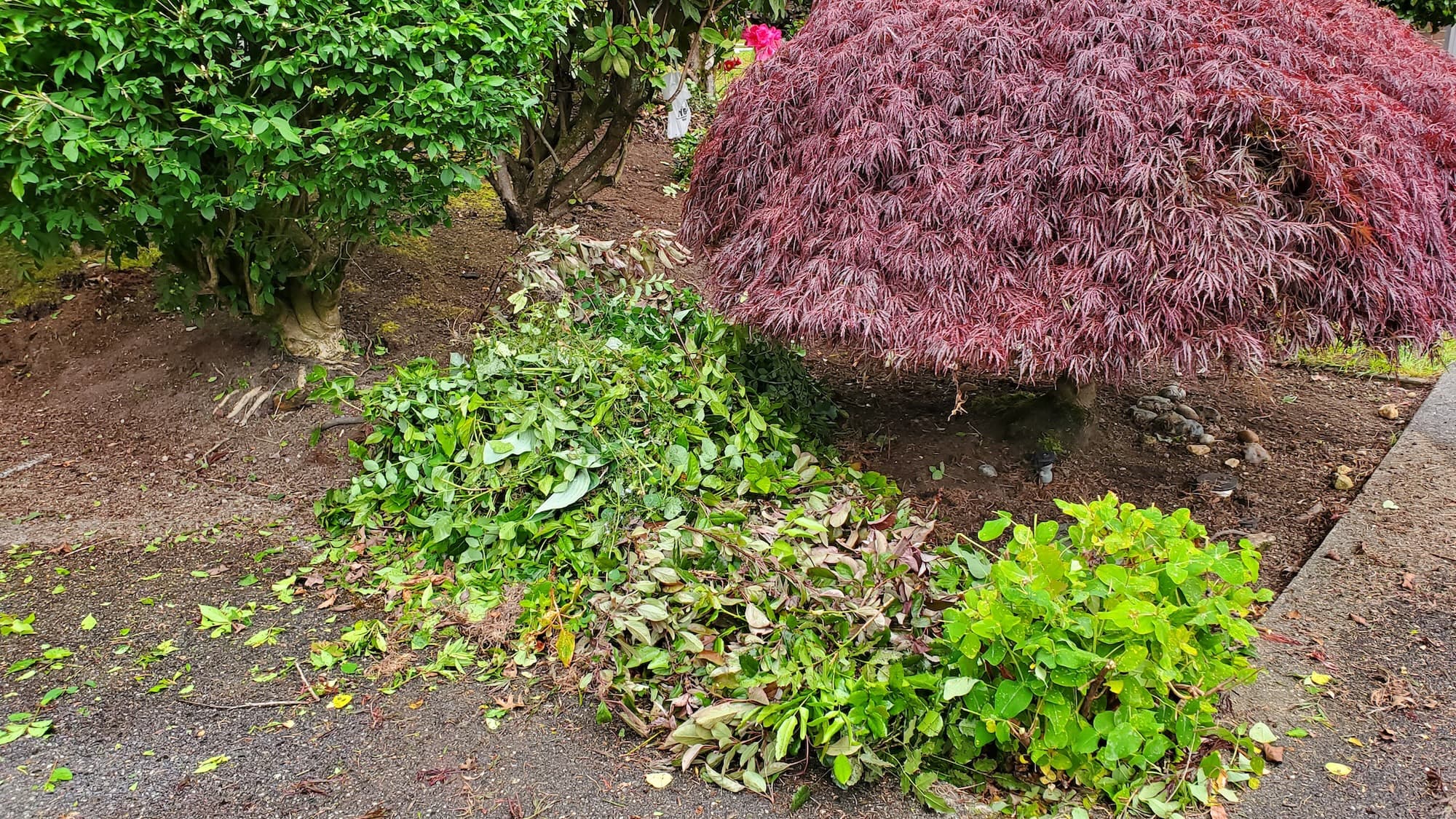White Center Single-leader training
Homeowner’s Issue
White Center yards sit in a Pacific Northwest microclimate: frequent fall/winter rain, compacted loamy-clay soils, and pockets of heavy shade from mature maples and Western redcedar. These conditions encourage moss, shallow-rooting plants, and competing leaders on young trees. Many properties also have modest slopes that drain toward foundations or driveways, so poorly trained trees and overgrown understory can worsen erosion and clog drainage during heavy rains.
Homeowner concerns center on safety, curb appeal, and HOA or neighborhood design guidelines. Unstructured trees develop multiple leaders or weak crotches that are vulnerable in windstorms, especially near Westcrest Park and along the Highline corridor. Homeowners want low-maintenance solutions that reduce storm damage, improve sightlines, and fit neighborhood rules. Sustainable Yard Maintenance here favors pruning timing, organic mulches, and soil improvements rather than herbicides. A focused single-leader training plan addresses structure early, improves long-term stability, and reduces the need for frequent corrective pruning—saving time and money while keeping your yard tidy and storm-ready.
Our Quality Service
We assess each tree with local context in mind: rainfall patterns, slope drainage, soil compaction, and sun exposure. We prune to establish a dominant central leader, remove competing stems, and, where needed, install non-invasive supports to guide growth. All pruning follows best practices for wound reduction and long-term form.
Our methods are sustainable and herbicide-free. We use organic mulches, compost or soil amendments, and hand tools whenever possible to protect root zones and nearby plantings. Benefits include improved safety in storms, better curb appeal, reduced long-term maintenance, and healthier trees that handle Seattle’s wet winters.
What’s Included
- Site assessment and training plan for each tree
- Selective pruning to encourage a single leader
- Installation of stakes/ties when necessary (removable, non-damaging)
- Mulch ring installation around trained trees
- Debris haul-away or green bin sorting (your choice)
Options / Upgrades:
- Mulch + landscape fabric (where appropriate)
- Organic soil amendments and compost top-dress
- Organic weed control (no herbicides)
- Ivy and invasive vine removal (hand-pulled)
- Gravel or improved drainage at problem slopes
Before & After / Expectations
Expect some noise from pruning and chipping on service day and a temporary presence of wood chips and prunings while we work. We request clear access to trees and a short area to stage materials. After work, we haul or sort debris per your preference and leave trained trees with a tidy mulch ring.
Care tips after training:
- Water new or young trees during dry spells (deep soak every 2–3 weeks in summer).
- Keep mulch 2–4 inches deep, pulled a few inches from trunks.
- Monitor for moss and manage shade with selective thinning if needed.
- Remove ivy and groundcover around trunks to prevent girdling.
FAQs
How long before results are visible?
You’ll see structural improvement immediately; full form develops over 1–3 years.Do you use herbicides?
No. We use organic, mechanical, and cultural methods only.Will this disturb my lawn or beds?
Minimal disturbance; we protect beds and edge carefully. Mulch and soil amendments are applied by hand.How often should training be checked?
A short follow-up each growing season for 1–3 years is typical.
Call to Action
If you manage a yard in White Center, West Seattle, or the Highline area and want safer, lower-maintenance trees, book a free estimate. We schedule quickly, work cleanly, and bring local Yard Maintenance expertise to every job. Email neatandtidyseattle@gmail.com to request a visit or a photo-based estimate.










